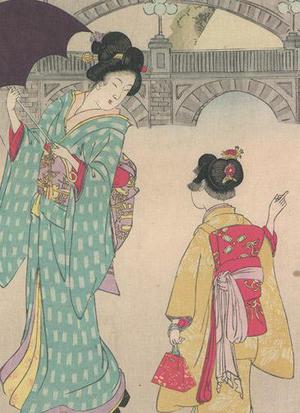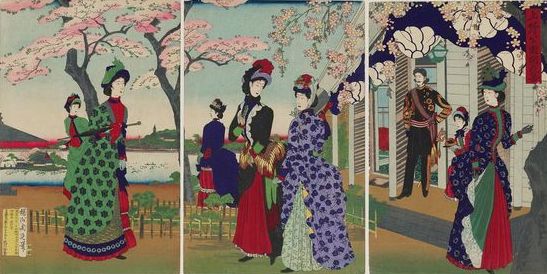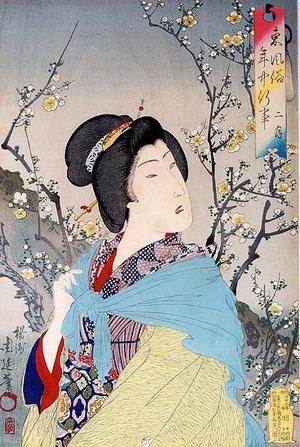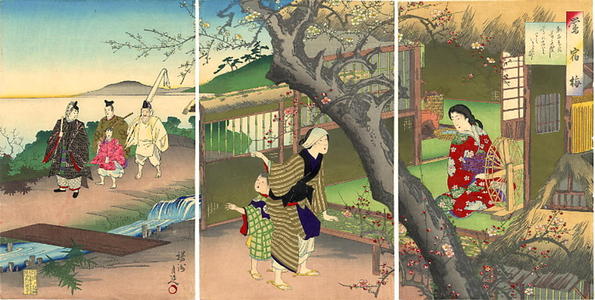Meiji artist: Edo to modernization in Japan
Lee Jay Walker
Modern Tokyo Times

The Japanese artist Yoshu Chikanobu (Toyohara Chikanobu) was prolific. He lived between 1838-1912. Thus Chikanobu belongs to the world of Edo and Meiji. Yet, his artistic legacy was shaped by the Meiji Period of 1868-1912, whereby he fought against the changing internal artistic sands.
Chikanobu focused on an array of subject themes. After all, the changing times witnessed regional wars between Japan and other nations. Hence, for a period of time, the coverage of war became popular during the Meiji Period. Other natural themes highlight the changing of fashion – from traditional clothes to the influence of Western clothes that were especially popular among many of the wealthier people of society. Therefore, when viewing Chikanobu, one moment it could be a beautiful lady and the next a gruesome murder scene to entice new clients.

The British Museum says Chikanobu was a “Prolific artist of triptych prints showing new sights of Tokyo during the 1870s, publicizing the activities and changing appearance of the Imperial family; and later, in the 1890s, of historical works showing the customs of the Shogunal harem in Edo Castle (series such as ‘Chiyoda no ooku’, 1896). Also half-length portraits of beauties in the series ‘Shin bijin’ (1897) and many actor prints. The few paintings by him so far introduced – all idealized images of ‘bijin’ – display a highly accomplished technique.”

Originally, the art school of Kano developed his early art. However, in time Chikanobu focused heavily on ukiyo-e. Thus, after studying under Kunichika, Kunisada, and Kuniyoshi: the stage was set for Chikanobu to develop his own style and interests – and connect with the general public through the prism of art.
Historical events, including the ill-fated Satsuma Rebellion (1877) and the Imo Incident on the Korean Peninsula (1882) – and other historical events – were covered by Chikanobu. He also utilized aniline dyes imported to Japan. Therefore, dramatic reds and purples bless some of his artwork.

Ukiyo-e eventually succumbed to a plethora of new art styles ushered from Europe. Indeed, Meiji elites were at the forefront of sending Meiji artists to Europe and North America to study various Western art movements. However, despite the shifting artistic, cultural, and technological sands, Chikanobu continued to highlight the beauty of ukiyo-e until his death.

PLEASE SUPPORT MODERN TOKYO TIMES by DONATING
Modern Tokyo News is part of the Modern Tokyo Times group
DONATIONS to SUPPORT MODERN TOKYO TIMES – please pay PayPal and DONATE to sawakoart@gmail.com
http://moderntokyotimes.com Modern Tokyo Times – International News and Japan News
http://sawakoart.com – Sawako Utsumi personal website and Modern Tokyo Times artist
https://moderntokyonews.com Modern Tokyo News – Tokyo News and International News
PLEASE JOIN ON TWITTER
https://twitter.com/MTT_News Modern Tokyo Times